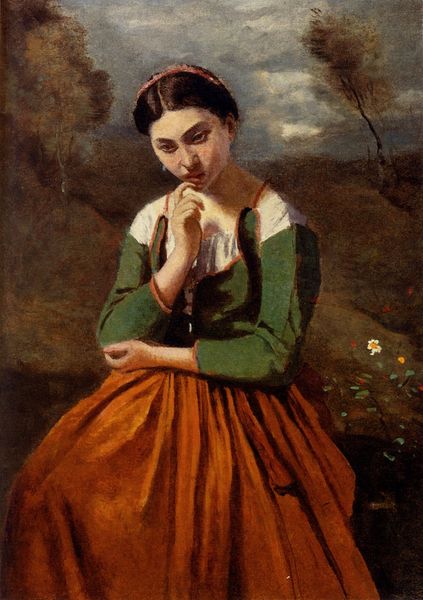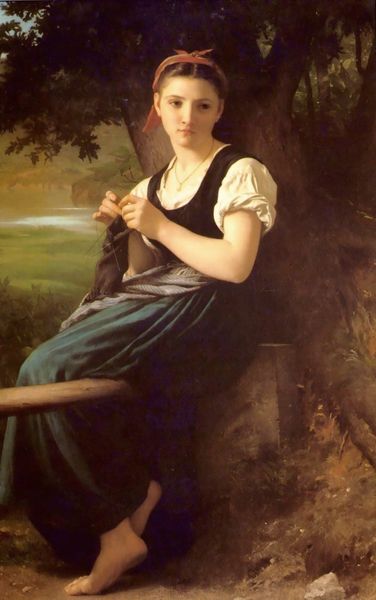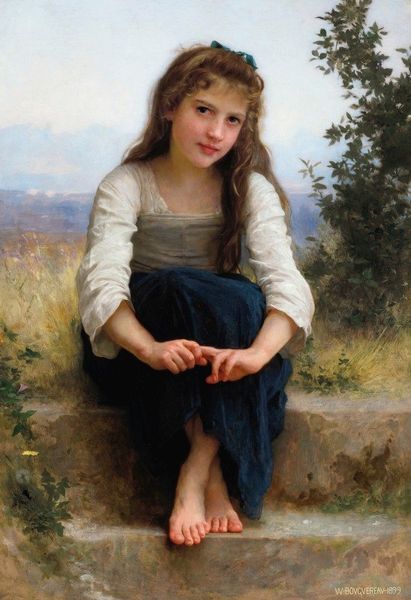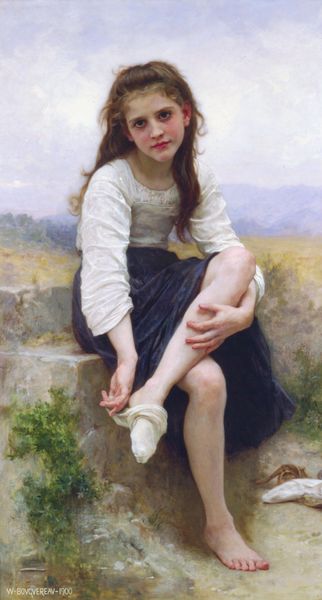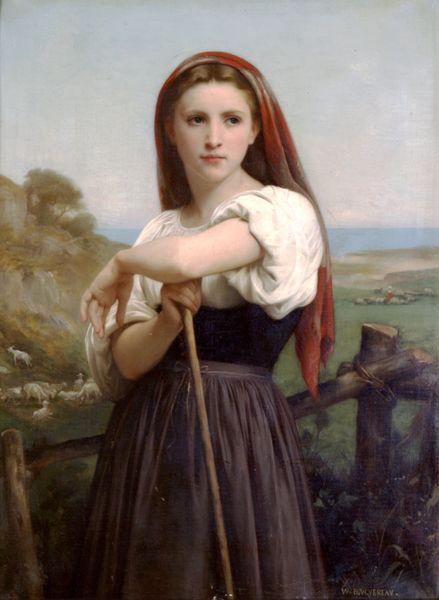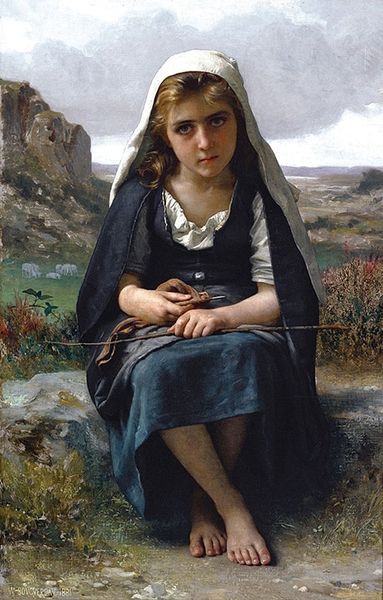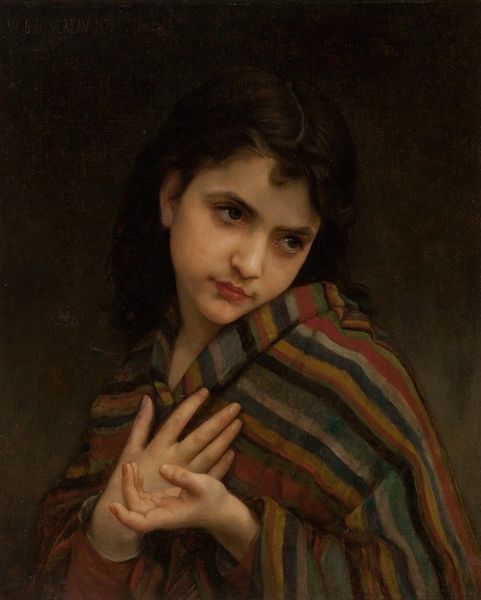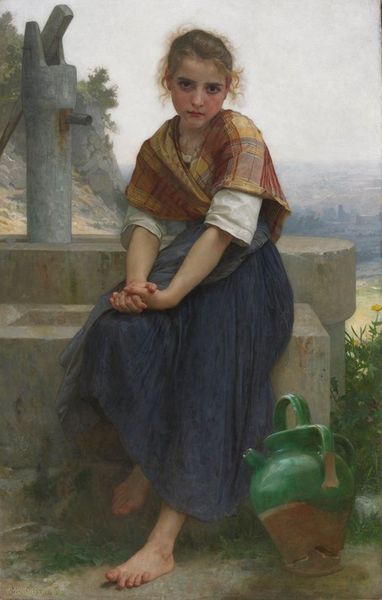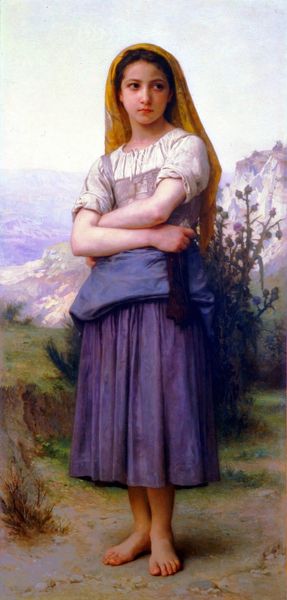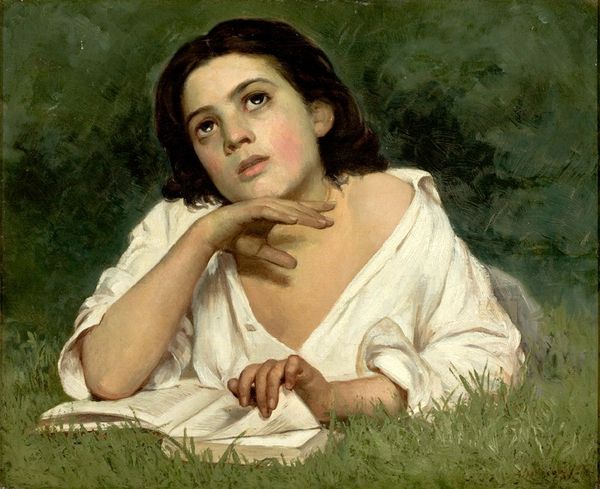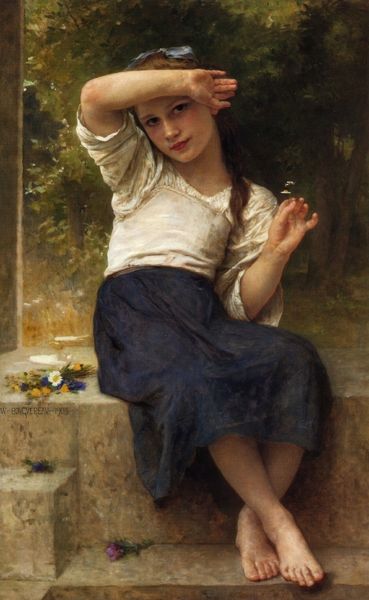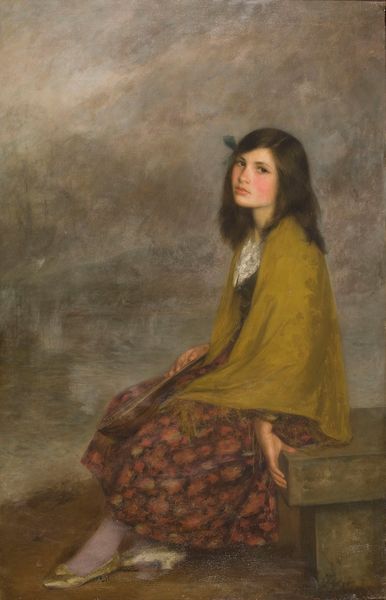
Dimensions: 81.3 x 100.4 cm
Copyright: Public domain
Curator: Bouguereau's "Mignon," completed in 1869, presents us with a portrait nestled within a landscape, rendered in his characteristic oil paint technique. Editor: It strikes me immediately as possessing a deep melancholy, the figure seemingly isolated within this rugged backdrop. The tight composition focuses all our attention on the girl’s plaintive expression and how her posture creates a pyramid, rooted on her dark clothing. Curator: The posture you describe acts as more than compositional framework, I believe. Hands clasped in her lap, she appears restrained. Consider the title, "Mignon" – suggesting smallness, daintiness and fragility. It invites interpretations linked to Romanticism's fascination with youth, innocence and vulnerability, themes heightened by the enveloping landscape. Editor: Indeed, she could almost be seen as a Romantic heroine lost within an epic painting. I keep returning to her eyes; they have a slightly downcast slant but do hold a determined gaze. Note that her dark hair and eyebrows, as well as her black clothes, contrast dramatically with her bright complexion and fair undershirt. Those opposing textures create balance but suggest duality: a combination of both resolve and sorrow in a world of beauty. Curator: I agree. The light plays skillfully over her skin, drawing the viewer into a very intimate interaction with her emotions. Let us consider the structure and lines in the rocks, for example. They point towards the subject as they are placed as supporting pillars to a unified figure. Editor: It does lead our gaze in a deliberate fashion to make this very point. Considering the time and culture, the imagery could carry many messages, including society’s perceived loss of innocence and virtue during industrial changes, a sentimental theme popular at the time. Curator: Ultimately, in my view, “Mignon” transcends its historical context. It offers viewers, across the ages, an access point for ruminations on universal themes and complex compositional forms. Editor: Absolutely. And seeing those themes reassert themselves in our minds really allows the power of the subject to transcend time itself.
Comments
No comments
Be the first to comment and join the conversation on the ultimate creative platform.

